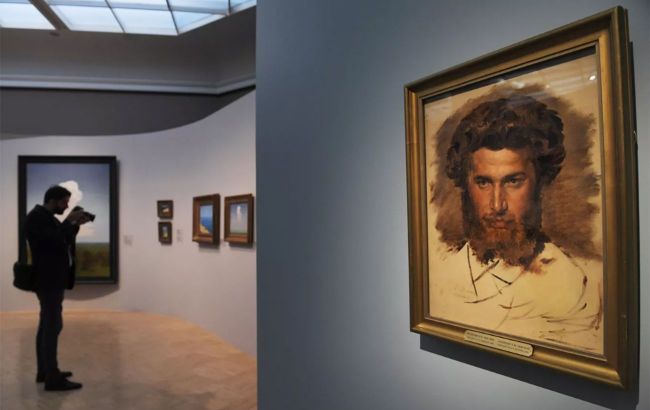Ukrainian Van Gogh: How Arkhip Kuindzhi changed landscape painting forever
 How the Ukrainian Van Gogh from Mariupol lived and why Kuindzhi is called a genius (photo: facebook/artfamily)
How the Ukrainian Van Gogh from Mariupol lived and why Kuindzhi is called a genius (photo: facebook/artfamily)
His works made people stand for hours in front of the canvas, amazed at how an ordinary landscape could glow from within. Arkhip Kuindzhi is a Ukrainian artist known as the Ukrainian Van Gogh, not only for his expressive style but also for his revolutionary use of color, light, and composition.
RBC-Ukraine reports how the genius from Mariupol in the Azov region, Arkhip Kuindzhi, lived and why he became a true legend.
Origin and early years
The exact birth date of Arkhip Kuindzhi remains a mystery, but he was born in Mariupol.
The artist himself did not know his exact birth date. In a letter to the Academy of Arts, he confidently wrote 1841, but he revised the month — January — several times.
For a long time, 1842 was generally accepted as his birth year. However, archival documents from the Donetsk region, including the record of his wedding in 1875, which lists the groom's age as 34, suggest 1841. His passport, issued shortly before his death, states that he died in 1910 at the age of 69.
An artist of a new vision
Kuindzhi's landscapes are not just about nature but also about philosophy. He conveyed atmosphere, mood, and the depth of light. His works stand out for their experimental approach to color, layered technique, and unusual sense of space.

The Chumatsky Trakt in Mariupol (photo: Wikipedia)
Why is he called the Ukrainian Van Gogh?
The comparison between Arkhip Kuindzhi and Van Gogh is not accidental. Both artists share not only an expressive style but also inner loneliness, an innovative approach to art, and a special sensitivity to light and color.
Color as emotion
Both artists were colorists for whom paint was not just a tool to reproduce reality but an instrument of deep psychological impact.
Kuindzhi used colors to evoke feelings of warmth, cold, calm, or anxiety, much like Van Gogh did in his works.
Ahead of his time
Kuindzhi created art in the era of realism but thought like a modernist. His approaches to composition, lighting, and atmosphere were decades ahead of artistic trends.
Similarly, Van Gogh gained fame only after his death, as society did not immediately appreciate his innovative work.

Ukrainian Night (photo: Wikipedia)
Isolation and loneliness
Like Van Gogh, Kuindzhi chose a path of seclusion in his later years. He withdrew from exhibitions, rarely explained his works, and left almost no written records about himself. This added a mythical aura to his image.
Strong inner intuition
Kuindzhi was self-taught — without formal artistic education — but possessed an exceptionally developed sense of form, light, and color.
The same was said about Van Gogh — an intuitive genius who did not fit into academic frameworks.

Evening in Ukraine (photo: Wikipedia)
Light is the main character
In his most famous paintings — Moonlit Night on the Dnieper, The Chumatsky Trakt in Mariupol, After a Rain — there is a glowing effect.
The artist experimented with varnishes, color layers, and transparent paints. The effect of light emanating from within remains a mystery to researchers to this day.

Moonlit Night on the Dnieper (photo: Wikipedia)
A recluse and patron
Despite his fame, Kuindzhi withdrew from public life in his later years. He supported young artists financially but rarely appeared at exhibitions.
His creative path was that of a quiet rebel who left a mark on art not with words but with light.
You might also be interested in:
- Who is the woman depicted in the painting Mona Lisa?
- Which of the great artists was a terrible person in everyday life?
Sources: Wikipedia, National Art Museum of Ukraine, Encyclopedia of Modern Ukraine, The Art Newspaper.

